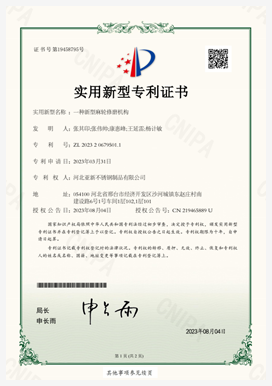Creating a Formula for Effective TMR Feed Management and Optimization Techniques
Understanding the TMR Feed Formula Essential for Livestock Nutrition
The Total Mixed Ration (TMR) feed formula plays a crucial role in modern livestock farming, ensuring that animals receive balanced nutrition that optimizes growth, milk production, and overall health. TMR refers to a method of feeding where various feed ingredients—grains, forages, protein sources, vitamins, and minerals—are combined to create a single, homogenous feed mix. This method of feeding has gained popularity due to its numerous benefits for both livestock and farmers.
The Importance of Balanced Nutrition
The primary goal of a TMR feed formula is to provide a balanced diet that meets the nutritional requirements of livestock. Understanding the nutritional needs of animals is vital, as it directly affects their growth rates, reproductive performance, and productivity. For dairy cows, for instance, a well-formulated TMR can significantly increase milk yield and quality, while also enhancing the health and longevity of the cows.
Balanced nutrition in livestock feeds includes considering macronutrients like carbohydrates, proteins, and fats, as well as micronutrients such as vitamins and minerals. The precise formulation of these components ensures that animals achieve optimal performance and health, making TMR an invaluable tool for livestock producers.
Components of the TMR Feed Formula
A TMR feed formula is composed of several key ingredients, each contributing essential nutrients
1. Forages Forages are the backbone of TMR, providing fiber that is essential for proper digestion. Common forage types include alfalfa hay, silage, and grass hay. The choice of forage can affect the overall palatability and nutritional value of the feed.
2. Grains Grains such as corn and barley offer a rich source of energy. They are typically included in the TMR to boost the calorie content, which is particularly important for high-producing dairy cattle.
3. Protein Sources To meet the protein needs of livestock, ingredients such as soybean meal, canola meal, and various by-products are included. Adequate protein is essential for growth, milk production, and overall animal health.
4. Vitamins and Minerals Essential vitamins (A, D, E, etc.) and minerals (calcium, phosphorus, trace minerals) are added to ensure that animals receive the necessary micronutrients for metabolic functions, reproduction, and immunity.
5. Additives Various feed additives, such as probiotics, enzymes, and medications, may also be included in the TMR to improve digestion, enhance nutrient absorption, and promote animal health.
Formulating a TMR Feed
tmr feed formula

Creating an effective TMR feed formula requires careful consideration of several factors
- Nutritional Requirements The specific nutritional needs of the livestock must be assessed based on age, weight, production stage, and health status. This assessment helps determine the proportion of each ingredient in the TMR.
- Ingredient Availability Farmers must consider the availability and cost of different feed ingredients. Local feed resources can influence ingredient choices and formulations, as using homegrown or locally sourced feeds can reduce costs.
- Palatability The feed must be palatable to ensure that animals consume the intended amounts. Adding flavoring agents or adjusting the texture can help improve feed intake.
- Nutritional Analysis Regular analysis of feed ingredients is necessary to ensure that the nutrient composition remains consistent. Feed testing can help in adjusting the formula to maintain proper nutrient balance.
Benefits of Using TMR
1. Improved Feed Efficiency TMR allows for more efficient feed utilization, as animals ingest a balanced diet in every bite, which can lead to reduced waste and improved growth rates.
2. Healthier Animals A balanced diet reduces the risk of nutritional deficiencies and associated health problems, promoting overall animal wellness and performance.
3. Better Milk Production In dairy operations, TMR has been shown to increase both milk yield and quality, which can lead to higher profits for farmers.
4. Simplified Feeding Management Feeding livestock a TMR simplifies management practices, reducing the time and labor needed to ensure each animal receives a balanced diet.
Conclusion
In conclusion, the TMR feed formula is an essential aspect of livestock nutrition that supports animal health and productivity. By carefully formulating a balanced and palatable mix of various feed ingredients, farmers can ensure that their livestock meets its nutritional needs efficiently. As the demand for high-quality animal products continues to grow, the importance of effective feeding strategies like TMR will remain at the forefront of sustainable livestock management practices.
-
What Makes Felt a Great Choice?NewsNov.19,2024
-
Total Mixed Ration (TMR) Feed for CattleNewsNov.19,2024
-
The Ultimate Guide for Felt Polishing WheelsNewsNov.19,2024
-
Industrial Felt for Various ApplicationsNewsNov.19,2024
-
Felt Makeup Bags and Inserts BagsNewsNov.19,2024
-
Choosing the Right Hotel TowelsNewsNov.19,2024
-
Your Go-To Guide For Affordable Wholesale Wool FeltsNewsOct.31,2024







